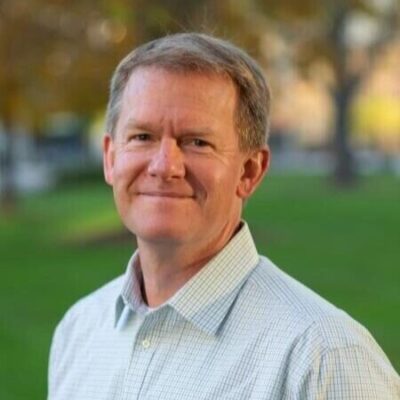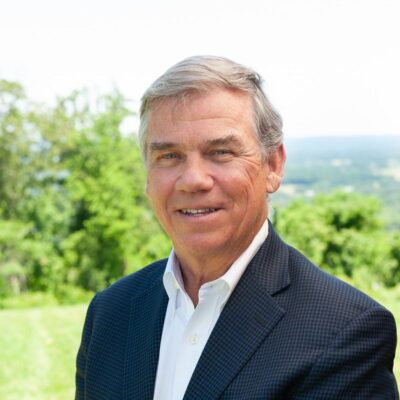Listeners:
Top listeners:
-
 play_arrow
play_arrow
116 | From Ticking Time Bomb to Demographic Dividend: James Mwangi and Kenya's Great Carbon Valley
-
 play_arrow
play_arrow
115 | Unpacking Donald Trump's Very Weird Environmental Orders
-
 play_arrow
play_arrow
114 | Michael Greene: Carbon Cowboy or Lone Ranger? Part 1
-
 play_arrow
play_arrow
113 | The Future of Environmental Finance: Strategies for Biodiversity and Climate Solutions, with David Hill and George Kelly
-
 play_arrow
play_arrow
112 | Fantasy Football and Dynamic Baselines: New Tools for Impact Assessment
-
 play_arrow
play_arrow
111 | The False Dichotomy Between Reductions and Removals (Rerun)
-
 play_arrow
play_arrow
110| Ecological Economics, Systems Thinking, and the Limits to Growth
-
 play_arrow
play_arrow
109 | How Brazil's Quilombola Communities are Planting the Seeds of Sustainability for Small Farms Around the World, with Vasco van Roosmalen of ReSeed
-
 play_arrow
play_arrow
108 | The Washington Post’s Head Scratcher of a Carbon Story
-
 play_arrow
play_arrow
107 | Francis Bacon and the Prehistory of Climate Finance. Second in an intermittent series on the Untold Story of the Voluntary Carbon Market
Transcript
When UK retailer Marks & Spencer launched its ambitious sustainability strategy in early 2007, it dubbed the strategy “Plan A” to remind us that we have just one planet, so there is no Plan B.
Plan A amounted to nothing less than a complete restructuring of the company’s supply chain – from the thousands of small farmers who produce its raw materials to the millions of people who buy its products – and it launched with an ambitious list of 100 commitments covering everything from the way it treats its partners to the health and well-being of its employees.
Despite the name, Plan A was designed to change over time, with an initial five-year phase ending in 2012 and leading to a more ambitious second phase, and then another after that. By late 2009, however, it was clear that the project had succeeded in galvanizing the workforce and winning over suppliers, but it wasn’t resonating with customers.
“Internally, Plan A has been a powerful change brand, helping 75,000 M&S employees and 2000 suppliers to see the links between activities as disparate as taking trans fats out of food, reducing energy use and promoting Fairtrade,” wrote Mike Barry, the company’s director of sustainability, in a 2009 piece for the UK marketing magazine “Campaign”.
“Consumers buy more deeply into sustainability when they are engaged in change, and not just told about it,” he continued, explaining the company’s 2009 decision to add a consumer-facing tagline: “Doing the right thing”, coupled with an education campaign.
Overhaul for the Long Haul
The 2008 banking crisis hit the retail sector hard, but by late 2009 Plan A had achieved 45 of its 100 commitments; and in 2010, auditors attributed £50 million of extra profit to Plan A – mostly because of energy efficiency and streamlined procurement costs. But Rose decided to leave the company that year, and one of his final acts was to initiate an early end to the phase one so that the sustainability team could harness the lessons learned for a new five-year phase through 2015, with regular five-year intervals after that.
“It might take 20 or 25 years to build a truly sustainable Marks & Spencer, and you can’t have a 25-year plan in retail,” says Barry. “Things change by the day, the week, the month. So what we had to have is a recognition that every few years – and five’s a nice cycle – we’d update the plan, and think about where to go next with it.”
Rose’s successor, Marc Bolland, recommitted to Plan A, which added 80 more commitments for the 2010-2015 period. By 2012, Plan A was delivering a net benefit of £105 million, according to that year’s annual report.
“The substantive part of this benefit comes from improved resource efficiency, although we are now deriving extra benefits from initiatives that drive our existing business and from new revenue streams,” it said.
To engage customers, they decided to crystallize their strategy into distinct Plan A Attributes, “and we decided that every M&S product has to have a Plan A story to tell by 2020,” says Barry.
What is a Plan A Attribute?
“In most cases, a Plan A attribute will be a well-recognized external environmental and social standard such as Forest Stewardship Council (FSC) Certified wood or Fairtrade certified cotton,” the 2011 annual report said. “Where external standards don’t exist we work with others to develop our own approach which is credible and robust.”
The annual reports hint at rigorous internal debates over what is and is not a Plan A Attribute, and each attribute is clearly defined and documented. Even before settling on a list of Attributes, however, the company agreed make sure that half of all products sold had one by 2015. By 2012, they had identified 55 attributes – 40 for M&S food and household products and 15 for M&S clothing and home products. By 2013, that number had risen to 70, and by 2014 – one year ahead of schedule – 56 percent of all products sold had at least one attribute.
Peruse their shelves today, and you’ll find familiar standards like Fairtrade as well as in-house standards like Forever Fish, but Barry says the company has a long way to go.
“Metaphorically, we are but 25% sustainable,” he says. “At least 75% of the journey lies ahead.”
And that journey, he says, can’t progress in a meaningful way unless we fix the entire ecosystem within which M&S operates. After all, the company’s $23 billion in revenue amounts to a rounding error in the $100 trillion global economy.
“Tiny little M&S is not going to make the world’s palm oil production sustainable on its own,” says Barry. “It needs to work with Unilever, with Coke, with Pepsi, with Walmart and all the others to make sure we can move the industry together.”
All of those companies have joined multilateral sustainability groups like the Consumer Goods Forum (CGF), where M&S plays a leadership role.
A “System Change”
“We have to be part of a system change, and that system change is, in part, because all of the retailers that we work with at the Consumer Goods Forum and Sustainable Brands line up and specify the same high standard of expectation of their supply chains,” Barry says
Such cooperation does seem to be generating results, according to a report called “Tracking Corporate Commitments to Deforestation-Free Supply Chains, 2017”, which the Forest Trends Supply-Change published in March.
The initiative looked at 35 collective efforts and found that at least 95% of the companies participating in such groups had pledged to reduce their impact on forests.
Meanwhile, Plan A continues to evolve. Earlier this month, current CEO Steve Rowe unveiled the plan through 2025, and it includes a plan to support 1,000 communities and benefit 10 million people – making M&S one of more than 100 companies to explicitly
Episodes
115 | Unpacking Donald Trump’s Very Weird Environmental Orders
January 27, 2025
114 | Michael Greene: Carbon Cowboy or Lone Ranger? Part 1
December 6, 2024
113 | The Future of Environmental Finance: Strategies for Biodiversity and Climate Solutions, with David Hill and George Kelly
November 28, 2024





